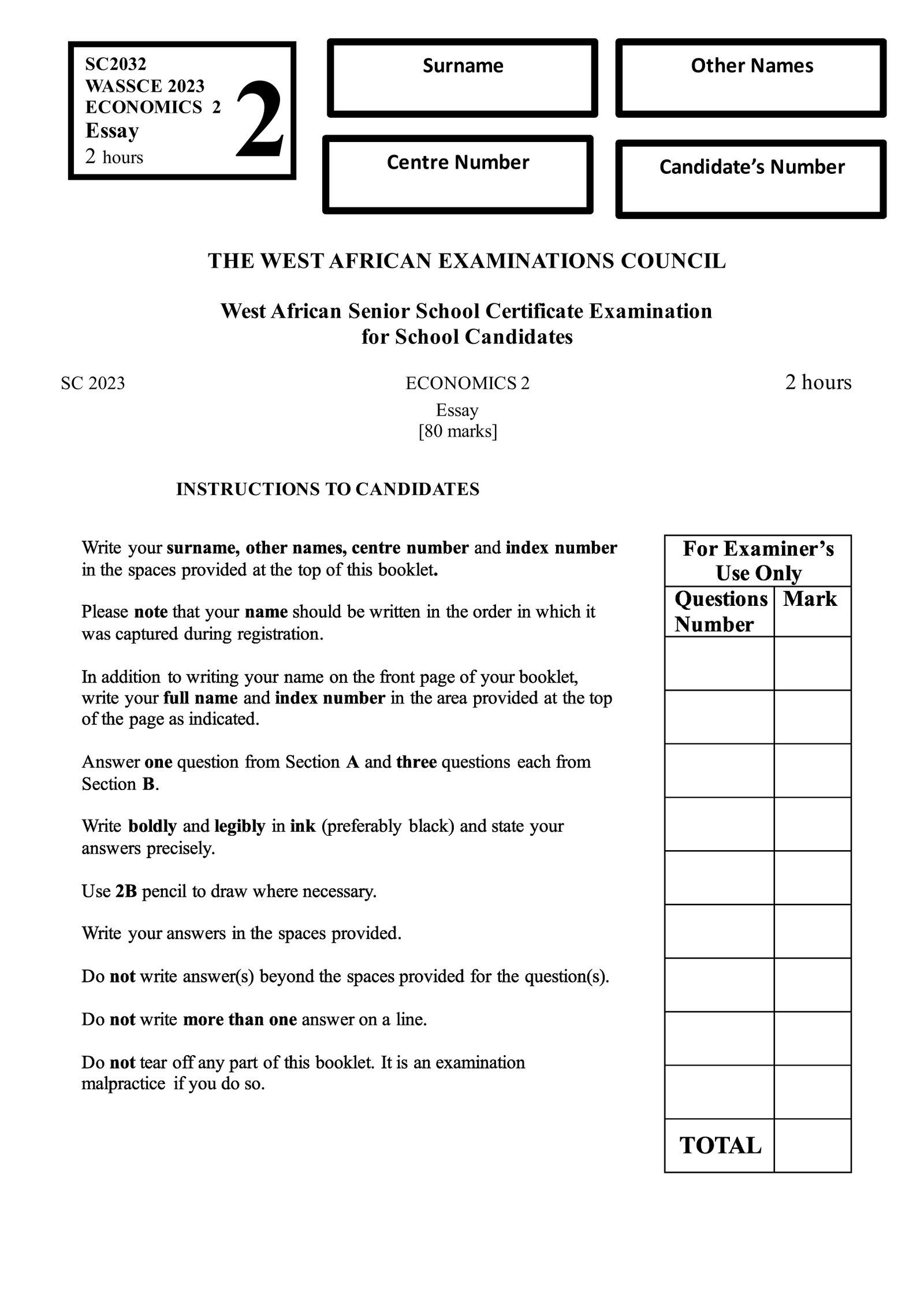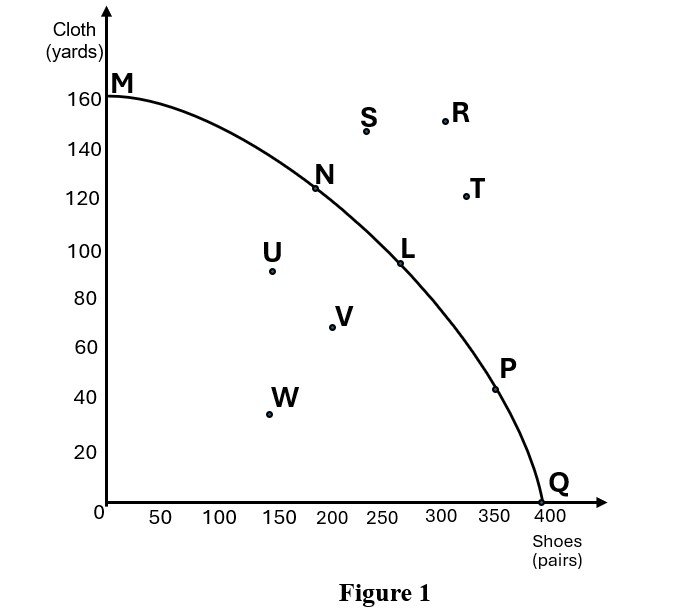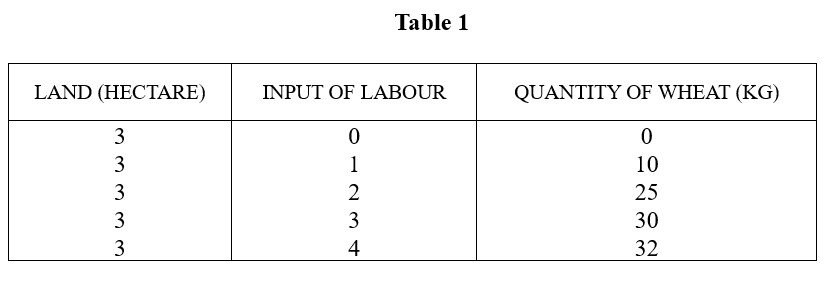

PAPER 2
[80 marks]
Answer four questions in all. One question only from Section A and any three questions from Section B.
You are reminded of the importance of clarity of expression and
orderly presentation of relevant materials.
All questions carry equal marks.
SECTION A
Answer one question only from this section.
The production possibility curve (PPC) in Figure 1 below shows different combinations of clothes and shoes that can be produced by a country. Study the graph and answer the questions that follow.

(b) Identify two points that are unattainable in production. Give a reason for your answer.
[3 marks]
(c) Identify two points that are inefficient in production. Give a reason for your answer.
[3 marks]
(d) What is the opportunity cost of shifting from point L to P?
[2 marks]
(e) (i) State two things the country can do in order to produce at point R?R?
[4 marks]
(e) (iI) If there is a parallel shift of the curve to point R, what does it signify in the economy?
[2 marks]
Table 1 below shows the relationship between the input of labour employed and the output of wheat produced on 3 hectares of land. 1 kg of wheat is sold for $ 1.00 and the wage rate per labour is $ 5.00. Study the table and answer the questions that follow.

(ii) 3;
[2 marks]
(b) Calculate the marginal product of labour at all levels of labour input employed.
[8 marks]
(c) At what level(s) of labour input employed is the farmer experiencing:
(i) increasing returns;
[2 marks]
(ii) diminishing returns?;
[2 marks]
SECTION B
Answer three questions only from this section.
(a) Define elasticity of demand.
[2 marks]
(b) Explain the effect of price elasticity of demand on:
(i) government policy of currency devaluation as it affects imports;
[6 marks]
(ii) the total revenue of a monopolist;
[6 marks]
(iii) the total revenue of a government from an indirect tax.
[6 marks]
(a) Define minimum wage.
[2 marks]
(b) Identify any Two factors that can encourage an employer to offer a higher wage rate are:
[6 marks]
(c) With the aid of a diagram, explain how fixing a minimum wage can create unemployment.
[6 marks]
(a) Define cash crop production.
[2 marks]
(b) Explain any three contributions of cash crop production to the economy of a country.
[6 marks]
(c) Identify any three causes of unstable incomes of cash crop farmers.
[6 marks]
(a) Explain the following concepts:
(i) per capita income;
[3 marks]
(ii) standard of living.
[3 marks]
(b) Describe the relationship between per capita income and standard of living.
[5 marks]
(c) Highlight any three problems involved in calculating national income using the income approach.
[9 marks]
(a) With an example, define public expenditure.
[3 marks]
(b) Explain how public expenditure can be managed in order to:
(i) curb inflation;
[4 marks]
(ii) reduce unemployment.
[4 marks]
(c) Outline any three sources of funds for financing public expenditure.
[9 marks]
(a) Differentiate between the International Monetary Fund (IMF) and the World Bank.
[2 marks]
(b) Outline four contributions of the World Bank to the economic development of a country.
[6 marks]